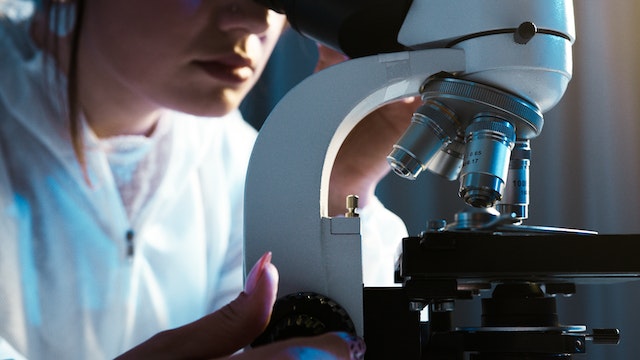Good Manufacturing Practice, or GMP, is a set of guidelines that govern the manufacturing process of pharmaceuticals and medical devices. The purpose of GMP is to ensure that products are safe, effective, and of high quality. In this article, we will take a closer look at what GMP is and why it is so important.
What is Good Manufacturing Practice?
Good Manufacturing Practice (GMP) is a set of guidelines that govern the manufacturing process of pharmaceuticals, medical devices, and food products. The goal of GMP is to ensure that these products are safe for human consumption and meet the quality standards set by regulatory agencies.
Photo by Artem Podrez: https://www.pexels.com/photo/person-looking-through-the-microscope-5726835/
GMP covers all aspects of the manufacturing process, from raw materials to finished products. manufacturers must have systems in place to control and monitor all steps of the production process. This includes procedures for quality control and assurance, as well as employee training and safety.
Regular audits are conducted to ensure that companies are complying with GMP guidelines. Failure to do so can result in fines, product recalls, and loss of market approval.
What are the benefits of Good Manufacturing Practice?
The benefits of Good Manufacturing Practice (GMP) are many and varied. GMP can help to ensure the quality and safety of products (
Generic drug manufacturing), improve efficiency and productivity, and reduce costs. Implementing GMP can also help to build consumer confidence in a company’s products.
Good Manufacturing Practice is an international quality standard for manufacturing processes and facilities. It is based on a set of principles that focus on ensuring that products are manufactured in a safe, consistent, and effective manner.
GMP (
Good Manufacturing Practice training course) covers all aspects of manufacturing, from raw materials to finished products. It includes guidelines for both production and quality control procedures. Companies that implement GMP can expect to see improved product quality, increased efficiency, and reduced costs.
Consumers can be confident that products manufactured under GMP are of a high quality and have been produced safely. This can lead to increased sales and brand loyalty.
Overall, Good Manufacturing Practice provides numerous benefits for both companies and consumers. Implementing GMP can help to improve product quality and safety, increase efficiency and productivity, reduce costs, and build consumer confidence.
What are the requirements of Good Manufacturing Practice?
Good Manufacturing Practice (GMP) is a set of regulations and guidelines that govern the manufacturing process of products intended for human consumption. These regulations are designed to ensure the safety and quality of products, and to protect consumers from adulterated or misbranded products.
GMP covers all aspects of manufacturing, from raw materials to finished products, and includes requirements for facilities and equipment, personnel training, sanitation, process controls, and product testing. Manufacturers who adhere to GMP standards can provide their customers with assurance that their products are safe and meet the quality standards expected by regulators and consumers.
There is no single GMP standard, but rather a set of guidelines that are specific to the products being manufactured. In the United States, GMP regulations (Pharmaceutical Compliance) are promulgated by the Food and Drug Administration (FDA) under the Federal Food, Drug, and Cosmetic Act. Similar regulations exist in other countries, although there may be some variations in the specific requirements.
How to achieve Good Manufacturing Practice?
Good Manufacturing Practice (GMP) is a set of guidelines and regulations that govern the manufacturing process of products. The aim of GMP is to ensure that products are of high quality and safe for human consumption. In order to achieve GMP, manufacturers must adhere to strict standards and procedures.
Some of the key elements of GMP include:
· Use of clean and sanitized equipment
· Controlled environment
· Strict adherence to recipes and formulations
· Documentation and record keeping
· Quality control testing
Following GMP guidelines can help to ensure that products are manufactured safely and to a high quality standard.
· Use of clean and sanitized equipment: All manufacturing equipment must be clean and free of contaminants. Regular cleaning and sanitization is essential to prevent cross contamination of products.
· Controlled environment: The manufacturing area should be kept clean and free of dust and other airborne contaminants. Temperature and humidity should be controlled to prevent degradation of products.
· Strict adherence to recipes and formulations: Recipes and formulations must be followed precisely to ensure that products meet quality standards. Substitutions or deviations from the recipe can result in sub-standard products (
Cleaning Validation).
· Documentation and record keeping: Detailed documentation is essential for all aspects of the manufacturing process. This includes raw materials, finished products, test results, and batch records. Good record keeping helps to ensure traceability of products and facilitates quality control.
· Quality control testing: Products must undergo regular testing to ensure that they meet quality standards. Testing methods may include physical, chemical, or microbial analysis.
Adhering to GMP guidelines can help to ensure the safety and quality of products. Manufacturers should consult with regulatory authorities to ensure that they are in compliance with all applicable regulations.
Conclusion
Good Manufacturing Practice (GMP) is a set of standards that companies must adhere to in order to ensure the quality of their products. These standards cover all aspects of production, from raw materials to finished products. Adhering to GMP standards helps to protect consumers by ensuring that they are getting safe and effective Pharmaceutical products and Formulation & Development.

Comments
Post a Comment